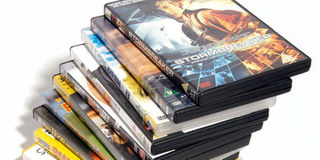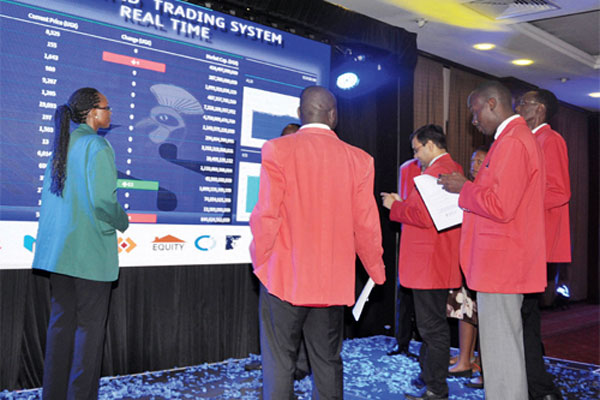Tech trends: Goodbye DVDs

A stack of movie DVDs. Televisions today have an option of using a USB device. So, people use flash drives to watch music videos and movies. COURTESY PHOTO
What you need to know:
The once preferred form of watching movies and music videos is slowly waning as DVDs quickly become something of the past, Eronie Kamukama writes.
In the late 1990s, it was trendy to have a DVD player in your house given that at the time, most Ugandan households were still using VHS tapes to catch the latest movies and music videos in town.
As the years went by, electronic enthusiasts dumped the VHS tapes as the DVD player gained popularity, after all it was lighter in size and produced better pictures. The options for use had also increased as some came with a USB or storage device port. So there was no need to buy a DVD to watch or listen to music.
Death of DVD
For 20 years, traders have cashed in on the DVD player but some are now saying the good old days of the DVD seem numbered.
An Indian trader at a Hisense outlet (who prefers anonymity) says sales are down.
“Televisions today have an option of using a USB device. So, people use flash drives to watch music videos and movies. In a week, you can sell at most, two DVD players,” he says.
This was not the case a few years ago. He says in the past, he would sell two DVD players every day. Traders like him have lost their market to smart phones, he believes.
But also, digital migration has had its toll on the gadget. Subscriptions to DSTV, GoTV, Startimes, Zuku and Azam mean that households have a huge range of content including movies, music, reality television shows and news channels to satisfy their entertainment and information needs.
At an LG outlet on Kampala Road, Mr Khan Mohammed, a salesperson, says people are still buying but sales are dropping.
“Before, sales were at 80 per cent and now they are at 65 per cent. Selling depends on the season, for instance in the Christmas season, we can sell about ten while in other seasons, you can sell about three in a month,” he says.
Regarding numbers, Mr Mohammed says the outlet sells about 100 flat screens a month, the 24-inch and 32-inch televisions as the most purchased sizes.
Stiff competition
To him, prices of the DVD are not responsible for the new consumer trends. Phillips, Samsung, LG, Panasonic and Sony dominated the market in the past costing over Shs200,000. Today, competition has never been stiffer than it was then, the salesman says.
Brands such as LG and Sony cost Shs220,000 but newer brands such as Alipu, Apex, Saachi have hit the market at lower prices.
Mr Peter Djack, a salesman in downtown Kampala’s Royal Plaza, says sales are dependent on brands today.
“For the newer brands, wholesale prices range between Shs70,000 and Shs100,000 and people want cheaper things today than ever. It is those who buy big old model televisions that buy DVD players. So we do not focus on selling them anymore. We buy one carton just in case one customer might need one,” Mr Djack says.
Low sales
According to Mr Mohammed, with their DVD player sales affected, especially because they concentrate on high-end brands such as LG and Sony, the likes of Djack who sell between Shs70,000 and Shs100,000 are in good business for now.
He believes the DVD player will in future be irrelevant because of the internet.
“Whatever is on a DVD, you can access on the internet. If you have a smart television, you can stream movies online on Netflix and you can watch videos on YouTube. Plus, the internet is getting cheaper every day,” he concludes.
Rise of smart gadgets
The retailer says smart gadgets are now more popular and are responsible for the trend.
“People were buying big old model televisions and unless they had a decoder, they would have to buy a DVD player to watch a movie. There has been the advent of flat screen televisions, some of which are smart so those who can access internet anywhere and at any time do not find reason to buy a DVD player which you can only use at home,” Mr Mohammed explains.




